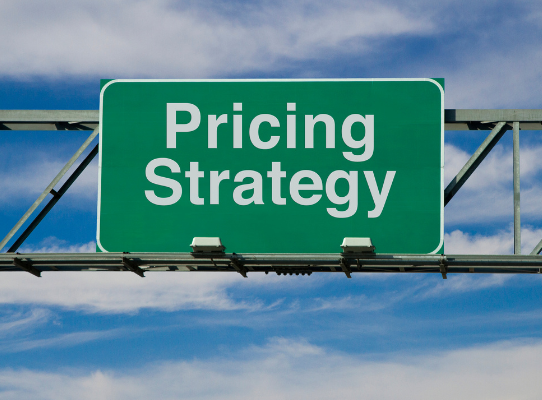Marketing is a buzzword tossed around in business and entrepreneurship circles, but it’s often hard to know how to implement the right tactics. Let’s look at some of the best marketing strategies that make a profitable campaign.
Why a Marketing Strategy Matters
A proper marketing strategy that involves various methods that are bound to be successful can make all the difference in the world when your business needs more customers and sales. Without one, it is hard for the company to gain traction and achieve growth.
Here are the reasons you need a marketing strategy.
Set Clear Objectives and Goals
Marketing involves more than just planning what you are going to do. It is about setting clear objectives for a campaign, making strategies to accomplish those goals, and developing plans based on the circumstances.
Marketing strategies help you plan your work and work your plan. They help set clear objectives, including which areas to concentrate on, analyze opportunities, and formulate a marketing plan. You also need to evaluate how achievable your goals and objectives are as you progress.
Some targets include doubling annual revenue or increasing the annual number of clients.
Target Your Key Audience
You need to define your business’s primary audience and target it. Your marketing strategy helps you identify your target audience and how to reach the clients, helping you enhance campaign results.
You must consider target audience demographics, psychographics, and other communication values. Some marketers decide to focus on a small group of people with specific age groups and interests who they can count on to form their core target audience.
With focused marketing efforts, enterprises can develop a group that they feel would align with their established brand image.
Organize and Automate Your Process
Many companies have suffered the consequences of poor organization. With a marketing strategy, you can plan your marketing tasks and activities and prepare a roadmap for creating, monitoring, and improving the effectiveness of your key marketing campaigns.
When you use automation tools and develop a marketing strategy plan, it becomes easier to organize and execute your marketing campaigns. Managing and automating your process eliminates confusion and ensures that your marketing strategy works efficiently.
Allocate Necessary Resources
You need to allocate the right amount of money and resources to ensure that everything will be done at a constant pace while keeping your costs minimal. If there is a specific reason you need certain facilities, like a skilled workforce or a particular type of software for marketing campaigns, then spending money on them would be wise.
With a marketing strategy, you can also plan how to manage your time and money more effectively. Through proper resource allocation, you ensure necessary resources are strategically deployed and help you develop the best possible plan for your campaign.
Consider where your specific resources should be best allocated. A marketing strategy helps you prioritize tasks and activities to focus on what is essential to achieving your goals.
Enhance Efficiency, Performance, and Productivity
When you develop a comprehensive marketing strategy for your business, it becomes easier to plan and schedule vital elements for your marketing campaigns. It makes it easier to measure the effectiveness of your campaign and decide when adjustments are needed.
You can also easily schedule tasks and strategize ways to achieve maximum workplace efficiency, performance, and productivity. A proper strategy requires you to divide your tasks into specific activities and manage each individually.
Find out what works best in planning, organizing, delegating responsibilities, managing project activities, regularly reporting progress or status updates, and effective time management. Your business growth strategy helps you produce high-quality campaigns without sacrificing efficiency.
Types of Marketing Strategies for Small Business
There are different types of marketing strategies that will help you grow your business. Even though some varieties are more successful, all campaigns have unique value and purpose.
Here are six marketing plans for small businesses.
Create a Business Website
If your small business doesn’t already have a website, it’s time to get one. A properly designed and created website with all the essential information about your business will help you upgrade it and increase sales.
The look and feel of your website should be professional, fresh, and modern. It should give your visitors a good impression and give them a decent first impression. Your website must have a unique design that distinguishes it from the competition.
Including contact information like an email address, telephone number, or physical address helps your clients reach out when they have queries. You must also post and regularly update content on your website to keep your audience engaged.
Start a Podcast for Your Business
In today’s digital world, podcasts are not just another type of entertainment. Many people use podcasts as a marketing strategy to promote their brands, services, and products. Podcasts are audio episodes that involve a host and a guest who discuss topics related to the business.
Use podcasts to communicate with clients, share important information, promote special offers, and persuade people to buy your products or services.
Clients can stream podcasts or download them directly onto smartphones or computers. Podcasting apps and software will make recording an episode much easier.
Utilize Free Promotional and Productivity Tools
Plenty of free software, apps, and other tools can be handy. The most important thing is to find out what works for your business and marketing strategy. Searching and brainstorming can help you find hidden gems that could suit your needs perfectly.
For example, a graphics generator tool will help you create unique images or graphics to help you promote your brand. Productivity tools will keep your marketing campaign running while providing a good return on investment in terms of time and money saved.
Make Video Tutorials
Making videos is a great way to inform your customers about your products and services. Creating high-quality video tutorials and explaining your products’ basic features and benefits will enable you to attract more potential clients.
You can embed these videos on your website or create a YouTube channel and post the tutorials. YouTube is one of the best places where you can promote your business. Additionally, you can share the tutorials on social media platforms for a wider market reach.
Grow Your Business Blog
The best way to get new clients and attract more customers is to start a business blog. Blogs are the most popular tools that businesses use for promotion. Blogs keep your company’s image updated and promote your products or services.
Your blog should be well designed, have a professional look and feel, include fresh content, and give a good impression of your brand. You can use it to communicate with clients and post news updates on current events or any relevant topics in the digital marketing industry.
Manage Relationships With a CRM
CRM (Customer Relationship Management) is a software application or system that helps you manage your relationship with clients and customers. Think of it as an open grid that stores all the relevant information about your clients, including their contact details, likes and dislikes, purchase history, and more.
Use a CRM to automate the communication process by adding the customers’ and affiliates’ email addresses and sending automatic emails based on the special request or action. You can use the CRM to track each client’s interests and communication history by keeping notes of their queries, suggestions, or orders.
Having a CRM system in place can increase the efficiency of your business, thus saving you time and money. CRM software sorts data meaningfully so you can make better decisions while communicating with your customers or clients.
How To Create a Marketing Strategy
The key to creating the best marketing strategies for your small business is understanding your particular business and its goals. Before you start your process, you must know precisely who your audience is and what you need to do to reach them. You also need to understand how you will measure the progress of your marketing plan.
Many areas affect marketing strategies, such as competitive analysis, demographics, target consumers, and SWOT analysis. Here are a few basic steps to create your marketing strategy.
Start With a Goal
As a business owner, ensure you know what you want to achieve with your marketing strategy.
You can also create several short-term goals that will guide your marketing plan for a certain period. Be realistic about the goals you set for your business since the actual results will come over time rather than instantly.
Creating goals based on your marketing strategy provides you with direction to follow and action steps to take. Setting goals will help prevent you from getting lost in the shuffle and losing focus on the things that matter most.
Conduct Marketing Analysis
Your marketing strategy should also contain a competitive analysis. A competitor analysis can help you avoid competitors’ mistakes, learn from others’ experiences and identify the strengths and weaknesses of their strategy.
You first need to list all of your direct competitors based on geographic location, pricing levels, and targeted customers. After listing competitors, run a Google search on each company, showing you the company’s complete history, including recent news articles or updates. You can then use this information as a basis for future action steps.
After market analysis, conduct a SWOT analysis. The SWOT analysis will give you a clear idea of how you fare in the market and areas where you can improve.
Create Buyer Personas
A buyer persona describes the target customer based on demographics, psychographics, and behavioral data. These are useful for coming up with strategies that reach out to potential clients in a better way.
Use buyer personas as a tool to better understand the motivations and characteristics of your ideal customer. The process involves creating a detailed profile of a hypothetical buyer based on the requirements and wants of your target audience.
Customers have specific needs and buying decisions. You must personalize user experience based on characteristics, desires, challenges, and behaviors that are unique for each individual.
Set a Budget
A small business has limited resources, and a budget helps you keep track of your spending and improve efficiency. A marketing strategy cannot be effective without proper budget planning and financial tracking.
Determine how much you plan to spend on your marketing efforts and how you will measure your campaign results. Once you create a budget, you must track all the expenses and how much you spend on each campaign element.
Select the Appropriate Tools
Once you have identified the main areas where you need to focus on creating a marketing strategy for your small business, you must ensure that you have selected the tools that will aid your efforts. You can use different tools for your marketing strategy depending on the types that work best for your enterprise.
For instance, data analytic tools allow you to collect data based on your target market and help you develop the best marketing strategies. A data-driven marketing approach lets you personalize the user experience and increase revenue.
Google Analytics is a free tool that can help you track the traffic to your website and provide insights into user behavior. The data enables you to decide if your page content needs to be improved or tweaked before spending money on more ads or other marketing strategies.
Analyze Performance
A good marketing strategy should also include a way to measure the performance of your brand over time. A marketing strategy is not static but a dynamic process.
Measure your marketing campaign’s performance to determine if your efforts are working and what you need to do differently in the future. You can then use this information to make changes or tweak your marketing strategy.
The Best Marketing Strategies for Business Growth
Creating a marketing strategy is crucial in taking your small business to the next level. Here are the best marketing strategies used by companies to take their operations to the next level.
Emphasize Your Value Proposition
Regardless of size and scope, every company should have a value proposition. The proposition is a unique selling position that makes your business more effective than your competitors. It’s the fundamental reason clients will pick you over other companies.
The best marketing strategies get based on what you can offer potential clients and customers. The strategies focus on how you add value to clients and how they can benefit from working with you over any of your competitors.
Personalize Your Customer Experience
The best marketing strategies today are all about personalization. Companies that consistently deliver a high-quality experience to their customers receive more referrals, attract new clients and maintain growing profits.
Co-branding, Affinity, and Cause Marketing
Co-branding is a strategy to build trust and strengthen relationships between your small business and other partnerships. By choosing co-branding, you can create a bigger audience and reach out to more people while avoiding competitors.
Affinity marketing is a specialized market strategy where you create an alliance with a specific audience to get more attention for your business. Cause marketing is trying to influence the buying decision of clients by involving your organization with a non-profit organization.
Co-branding, affinity, and cause marketing are the best ways for marketing strategists to reach the next level of success. Incorporating a third-party brand with your company’s name is a great way to strengthen existing relationships, especially when trying to build new ones.
Focus On SEO
SEO is a procedure to optimize your website to rank higher on search engine results. Search engine optimization involves utilizing keywords on your page and regularly updating unique content that attracts the right audience and generates more traffic.
Link-building is a method that is often used in SEO and can be an effective strategy for your small business if done correctly. When building links, you need to be very specific in approaching this and research the best way for your small business to connect with the people you want.
Pay-per-click marketing is a form of online marketing which is done online through search engines. It uses a viewable ad once a user clicks on it and can be used to promote your products or services affordably and helpfully.
Use Emails To Promote Your Brand
Email marketing is a powerful technique to help you achieve website traffic, customer engagement, and sales objectives.
The marketing strategy uses emails to inform people about your products or services’ benefits and industry trends. Using these emails, you can grow your customer base and help boost your relationship with your customers.
Leverage Social Media Platforms
Social media marketing is a strategy that helps you to promote your brand by developing social media profiles. Marketing relies on online processes, especially during a pandemic, making social media platforms a perfect choice.
Social media marketing enables you to create a user experience and allows your brand to connect with your audience. Your content should be created and curated to help attract more users and improve the overall customer experience.
Employ Influencer Marketing
Influencer marketing is a compelling marketing strategy that uses people with the potential to influence others. These influencers can help you to use their large audience in your favor and gain many more customers.
Influencers are people who are known for their quality in the field that you are selling and have the potential to influence other professionals in the same area.
Influencers have a more significant audience than you. Influencer marketing will boost your brand’s credibility, increase customer engagement, reach out to more people, grow your social media audience, and more.
Create an Affiliate Program
An affiliate program is a marketing strategy where the members generate traffic to your website in exchange for compensation.
The affiliates will promote your products on their blogs or websites, usually in an informative tone, and add a link to your website. If the readers click on the link and buy one of your products, the affiliate is compensated.
In the beginning, you need to send emails and messages that can help convince people that they should join your program.
An affiliate program builds a mutually beneficial relationship and generates opportunities for each party.
Craft Compelling CTAs
CTAs are anchor texts with embedded URLs that lead to the page where the visitor is supposed to join you or purchase your products. You need to ensure that these URLs are short and catchy to help boost conversion rates.
You should also consider what you want your visitors to do: either sign-up for a subscription, buy a product, or join your email list. The more CTAs you have, the easier it is for visitors to understand what they are supposed to do, which will help them become loyal customers.
Marketing Strategies Examples
Spotify has popularized the concept of streaming audio online. They have become one of the industry leaders by creating an intuitive and seamless way for users to listen to music and podcasts. The company emphasizes product experience and offers unlimited music and podcasts in multiple languages and regions.
Nike, a large sportswear company, has managed to reach millions of customers with their design and quality. The company has embraced influencer marketing to reach its global market by working with artists and Nike-sponsored athletes through collaborations.
FAQs
Here are some of the frequently asked questions regarding marketing strategies.
What are the 4 growth strategies in marketing?
The four growth strategies in marketing are customer experience personalization, search engine optimization, online marketing, and influencer marketing.
What are the latest marketing strategies?
The latest marketing strategies include podcasting and the use of automation like CRM.
What is the difference between a marketing strategy and a marketing plan?
A marketing strategy entails your approach to gaining a competitive advantage in the market, while a marketing plan contains the activities you take to achieve marketing success.
How do I market my business for 2023?
The best way to market your business for 2023 is by incorporating the online marketing strategies listed here.
Wrapping Up
Marketing is a vital part of the business process. Done correctly and implemented over time, your marketing strategy will become progressively more efficient at attracting new clients leading to business growth.













